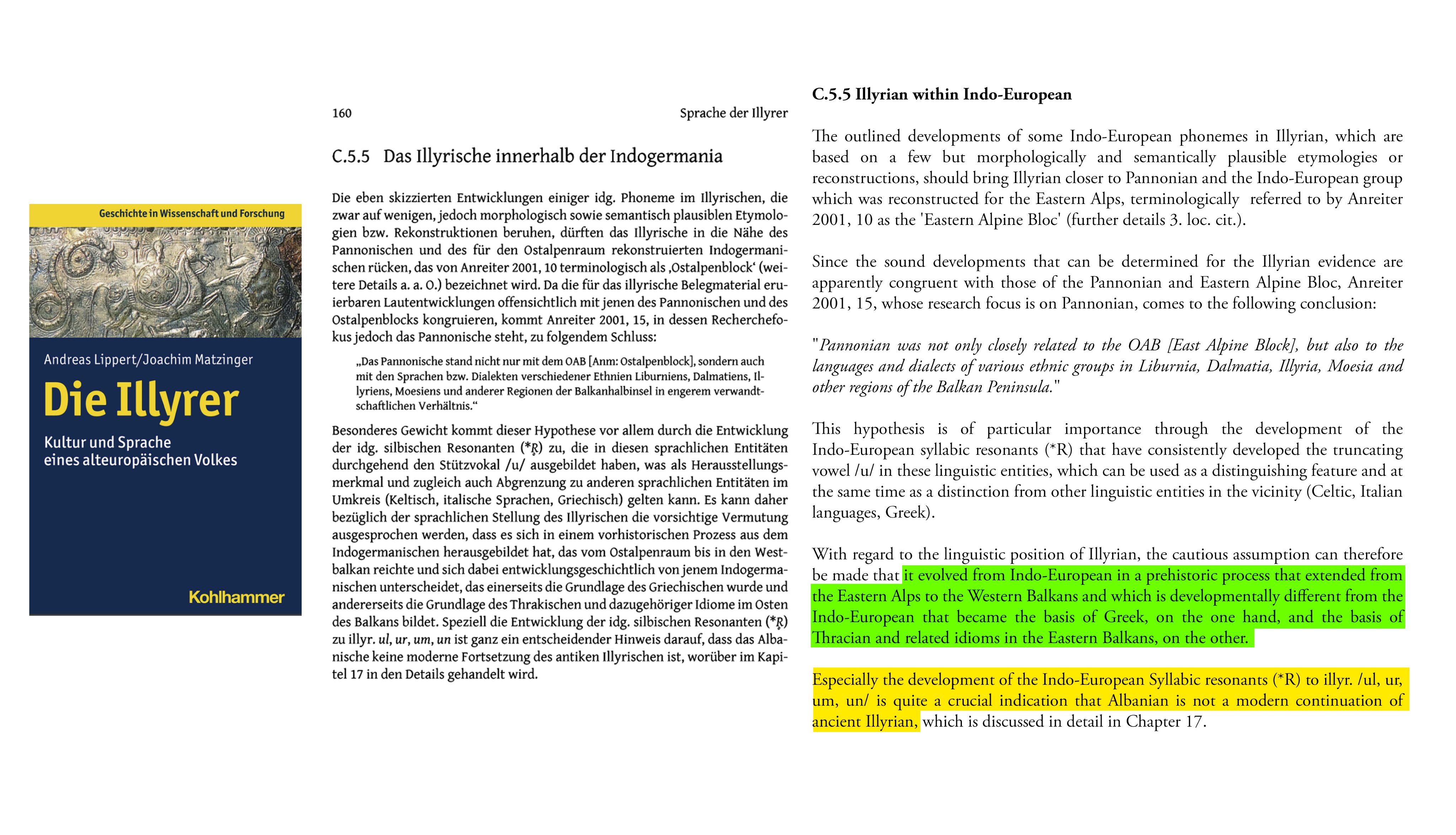Matzinger doesn't connect Albanian with Thracian into one group and Illyrian into another. Why are you linking a page where Matzinger says nothing about Albanian being related to Thracian?
Matzinger considers it impossible for Albanian to be related to Thracian.:
Als Fazit zur thrakisch-bessischen Hypothese ergibt sich aus einer linguistischer Sicht, dass diese abzulehnen ist, da nur sehr wenig Material zum Sprachvergleich zur Verfügung steht,(28) doch dieses zugleich eine sehr deutlich vom Albanischen unterschiedliche Lautentwicklung indiziert, die sich so nicht mit dem Albanischen vereinen lässt.
Hyllested and Joseph have written a new paper to be published in 2022 and say the same thing, Albanian and Messapic are under an Illyric branch.
@Paleo there are no reconstructed Dacian words which would enter Albanian and Romanian. Most of them are in fact just loanwords from Albanian to Romanian. See Matzinger 2018 Lexicon of Albanian, Handbook of Comparative and Historical Indo-European Linguistics:
Albanian shares a considerable number of words in common with Rumanian (see Solta 1980: 3 f., 125 f. and Vătăşescu 1997). Some of them are remnants of an old inherited vocabulary (e.g. Albanian thark ‘pen for young livestock’ ~ Rumanian ţarc ‘id.’), while others comprise a younger category of Latin words attested in some cases only in Albanian and Rumanian (e.g. Albanian mëngon ‘get up very early’ ~ Rumanian mâneca ‘id.’ ← Latin *mānicāre ‘id.’). Both classes emerged from old and intensive contacts between the Proto-Albanians and the ancestors of the Rumanians. A widespread opinion regards the older category of the Albano-Rumanian common lexicon as the reflex of an ancient substratum of Thracian, Dacian, or unknown origin (a collection of these words is Brâncuş 1983). Aside from a few single words of perhaps non-Indo-European origin (Albanian modhullë ‘yellow vetchling [Lathyrus aphaca]’ ~ Rumanian mazăre ‘pea’), the largest part of this alleged substratum common to both Albanian and Rumanian consists simply of loan-words in Rumanian from Proto-Albanian, e.g. Rumanian ţarc ‘pen for young livestock’ from Proto-Albanian */tsárka-/ (Modern Albanian thark). The derivational base of this noun is continued in the Old Albanian verb thurën ‘interweave’ (< IE */k̑erH-/ ‘weave’, cf. Latin crātis ‘pen’; see details in Schumacher 2009: 43−45).




